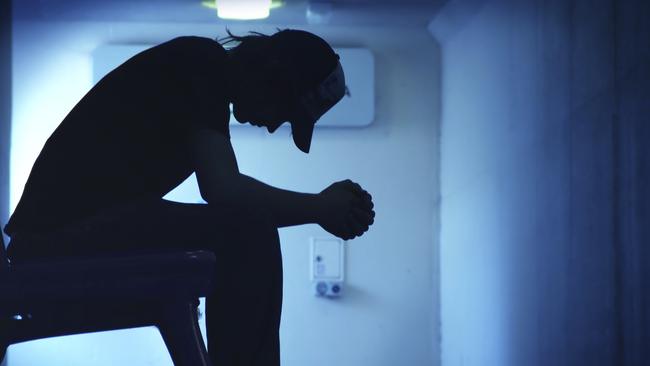Suicide and self-harm taking a huge toll
Suicide and self-harm is costing the Australian economy a conservative $32bn a year, an international expert says.

Suicide and self-harm is costing the Australian economy a conservative $32bn a year, with the emotional ripple effects among family, friends and those left behind likely to make the figure much higher, an international expert says.
But much can be done to reduce the bill, such as offering mental health first aid programs to people such as taxi drivers and hairdressers to help them recognise those at risk of harm and offer support, London School of Economics academic David McDaid says.
Associate Professor McDaid, a specialist in the economics of mental health and self harm, said the tragedy of self-harm and suicide was the extent of the emotional and economic fallout given it is largely preventable.
“Based on updating Productivity Commission data to 2022 dollars, the economic cost of suicide and self-harm in Australia is estimated to be $31.8bn,” Associate Professor McDaid said.
“Most is for lost life expectancy for the more than 3000 people who suicide each year, and the lost opportunity to be economically productive for an average of 40 years.
“But I’d argue that figure should be even higher, because this assumes people stop being economically productive when they retire, which is too simplistic. I’d also argue that it vastly underestimates the flow-on effect of suicide and self harm on family, friends and loved ones.
“Between six and 30 people are closely affected by each suicide, effects that can last years or even a lifetime. It changes life trajectories. People stop working to take over the care responsibilities of children.
“For the children of someone who suicides, it might mean a wholly different education experience, with lifelong consequences.”

Associate Professor McDaid is in Australia for an international summit on self-harm organised by The Black Dog Institute. Last year 3144 people died by suicide in Australia, three-quarters male. Almost one quarter of deaths in those aged 15-44 are due to suicide.
Nearly 30,000 hospital admissions for self-harming incidents were reported in 2020-21, with incidents among young people, particularly girls, rising rapidly. And the recent National Survey of Mental Health and Wellbeing found over 390,000 people reported “intentionally causing pain or damage to their own body”, 270,000 of them women.
Leading mental health academic and Black Dog Institute board director Helen Christensen said effectively addressing self-harm required a greater focus on the social determinants of health such as poverty and housing.
“We’ve heard from First Nations communities and those living in low and middle income situations that those environmental issues drive the rates of self-harm more than factors like anxiety and depression,” she said.
“There needs to be a lot more emphasis on improving the economic situation of at-risk individuals if we want to reduce self-harm.”
If you need support, contact Lifeline on 131114, or go to beyondblue.org.au




To join the conversation, please log in. Don't have an account? Register
Join the conversation, you are commenting as Logout